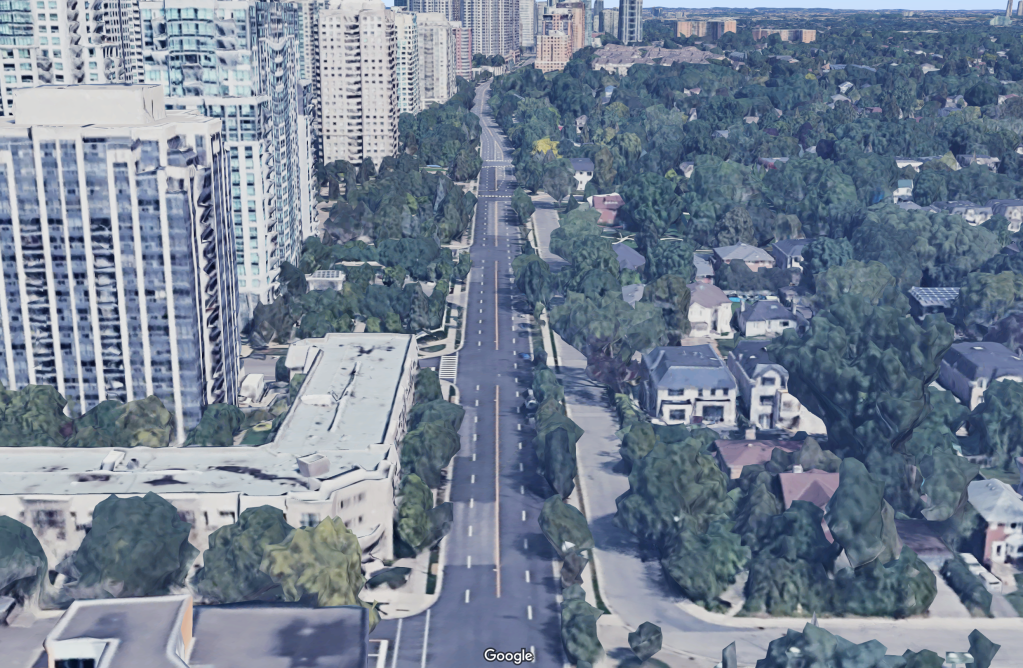Michael Beach used to have a YouTube channel where he “looked at Google Maps a lot.” Meaning, he would pan around various cities and comment on their planning and overall built form. Technically the channel still exists, but he stopped making new videos a few years ago. Here is one where he talks about Dubai being “an absolute mess” (3.8 million views) and here is one where he looks at North York (in Toronto) and asks: “why is it here?”
The most important point from his North York video is that it illustrates the deep divide that exists in Toronto (and other North American cities) between single-family “Neighbourhoods” (a defined planning term) and higher-density transit nodes, where things like tall buildings are allowed to go.
In the case of North York, this contrast is perhaps at its most stark. Even the street network is designed to stop these two urban forms from commingling with each other too much. There are ring roads that surround the transit-oriented density, and separate, more suburban streets on the other side of it:

This contrast is why there are so many people talking about the “missing middle.” And I’m sure that if you started asking random people on the street, most would agree that it would be nice if we could build more moderately-scaled housing. You know, like those buildings you see in Paris.
The problem: Where should it go? Some people would probably suggest the left side of the above ring road. Just don’t build as tall, okay? But this kind of land is already a scarce commodity in a city like Toronto. We need these tall buildings because most of the city is codified to look like the right side of the above ring road.
So if we have any chance of actually finding the missing middle, it is going to need to happen here, on the right side. Some progress has been made, not just in Toronto but across North America, with accessory dwellings (laneway suites). But it’s not going to be enough.
This was simply a first step. It was us finding a solution to, “how can we add some more housing here without changing the look and feel and character of these residential streets in any way?” But even this small and incremental change has proven to be exceedingly controversial. People still react to new laneway suites like this:
There are complex dynamics at play here.
If you’re a homeowner that decides to create a new rental home at the rear of your property, you might be viewed as greedy. You are creating something (a home) that someone needs, and you intend to make a small margin on the transaction. It’s like making and selling bread for a small margin, except that selling delicious bread to people is typically viewed in a positive light. On the other hand, ensuring that the value of your house remains as high as possible is generally good practice here. Greed doesn’t factor in this way because, you know, single-family homes.
There is no surprise why the missing middle is missing. It is missing because we have decided that we want it to be. But hey, $2,145 per month seems like a very reasonable price for a 2-bedroom house.

Couldn’t agree more, Brandon. If anyone is interested in hearing more about what’s happening in BC to enable more gentle density/ middle housing supply, join us at smallhousingbc.org. Lots of strategies to get these home typologies back into the development pipeline.
LikeLiked by 1 person
Pingback: Peaks and plains – BRANDON DONNELLY